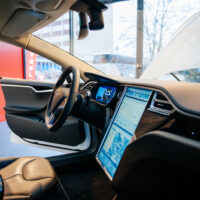Technological Advancement May Save Lives on the Road

While there was a time when saying that a car was so advanced, it practically drove itself was nothing but hyperbole, advancing technology in the field of vehicle safety is increasingly making this the case. Aside from technology in development by Google, Volvo, and Mercedes which allows cars to literally drive themselves, new features on cars currently available for sale offer self-adjusting cruise control, automatic braking, and electronic stability control. An imminent addition to this host of automotive technology will allow vehicles to communicate with one another, conveying important information that could prevent hundreds of thousands of accidents each year.
The technology, termed “vehicle-to-vehicle communication,” allows cars equipped with the system to transmit radio waves to similarly-outfitted vehicles nearby. In this way, cars can send each other information regarding their speed, braking, whether they plan to turn, or whether they are stopped in the roadway. Currently, even the most advanced vehicle safety systems rely on radar, cameras, or sensors which are highly limited in sensing objects not in their immediate field, and are largely unable to sense moving objects that are obscured by another car or are around the corner. Radio wave communication would serve to almost double the range of these safety features, and would be capable of warning a driver of dangers which would otherwise be impossible for them to see. These vehicle-to-vehicle communication devices would notify nearby drivers of the car’s speed, location, and the direction in which it was heading with radio broadcasts up to ten times per second. When the information seems as though it will present a safety hazard to a nearby driver, that driver will receive a warning of the upcoming hazard.
The National Highway Traffic Safety Administration (NHTSA) has been researching this technology for a decade already, and has issued a report detailing its findings on the possible safety advantages of the use of the technology by all new passenger cars. The NHTSA reports that, with only two potential applications of the technology – left turn assist and intersection movement assist—nearly 600,000 car accidents could be prevented every year, saving over 1,000 lives. The NHTSA is expected to publish proposed regulations on vehicle-to-vehicle technology in the new year.
If you or a loved one has been hurt in a crash in New York’s Hudson Valley, contact an experienced traffic accident lawyer of Rusk Wadlin Heppner & Martuscello for a free consultation on your potential lawsuit, at 845-331-4100 in Kingston or 845-236-4411 for our office in Marlboro.